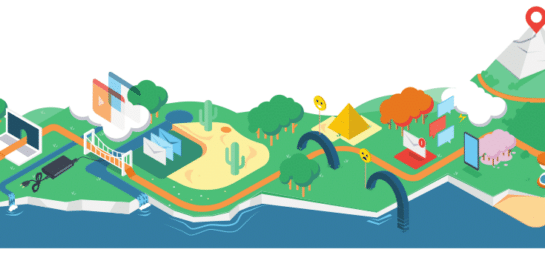6 ways to improve your Service Desk Customer Service

Customer experience is increasingly important to the modern service desk. Luckily, there are a lot of ways to make sure that your service delivery always meets your customer’s demands. Here are some of our favorite ways on how to improve your service desk customer service.
How to Improve Service Desk Customer Service
1. Improve your Self Service Portal
Is the best service self-service? In many cases, yes! All the small tasks that your team deals with on a daily basis are usually things that can be “outsourced” to your customers (we call this Shift left). It saves both you and the caller valuable time and in the end improves the customer experience.
For example, it’s great practice to make sure your Self-Service Portal meets the demands of your user base. You can do this by simply user-testing your current portal and listening to the feedback. Good questions to start off with, are:
- Is your portal intuitive enough for a first-time user?
- Do you use a language your customers understand?
- And does the structure of your portal make sense?
2. Map out your customer journeys
The best way to make sure your service desk customers have a great experience is to direct that experience yourselve. Map out your customer journeys for various types of calls and processes – one at a time – and make sure that every touchpoint meets a high standard of customer service. From reporting a call to the call evaluation once the call’s resolved.
Why not go beyond that and identify some points along the journey where you can really 'wow' your customers? Just one or two standout moments in the customer journey can significantly elevate the overall experience—and have a powerful impact on customer satisfaction.
3. Make your KPIs easier and customer-focused
Are you generating a huge list of reports to make sure your performance is on track? Stop that right away.
You need to keep track of metrics, of course, and you need KPIs. But we see far too often that there is a focus on reports over results. It’s much better to have 8 reports you use all the time than a lot of reports you will never use. It saves you time to focus on creating a better customer experience, instead of analyzing every aspect of the one you currently offer.
To keep your reporting as simple as possible, make sure it’s results-based, and maybe even project-based. If you’re looking at implementing self-service, for example, your go-to reports should be simple and to the point. How many people are using the portal? Which articles are read the most? If you need to deep dive to solve a specific problem, do so, but don’t take the plunge before you have to!
It saves you time to focus on creating a better customer experience, instead of analyzing every aspect of the one you currently offer.
4. Focus on your customers more than your processes
ITIL and similar frameworks can be very useful. But they become a problem when following a procedure is more important than solving an issue. And that impacts your customer experience. At the very least, it’s great practice to realize that ITIL is a framework and not a set of rules.
And be wary of using ITIL as a means to improve your customer experience. ITIL was never intended to help IT-managers keep their customers happy. And keeping customers happy is now more important than ever. And harder, too. If your customers can update an app on their smartphone within 30 seconds, how can you explain to them that a software upgrade at work takes months to plan and implement?
You can read our e-book on Best Practice Service Management to get a better understanding of what we mean.
5. Step up your Knowledge Management
A sound system for Knowledge Management is getting increasingly important. If you want to successfully introduce self-service, you’ll need to organize your knowledge. Make sure all your how-to’s, FAQs and solutions to commonly occurring issues are organized and available to your service desk – and your customers.
Implementing a knowledge base may sound like a huge project, but it doesn’t need to be. It’s one of those projects that lends itself perfectly to a step-by-step ‘think big, start small’ process. The best thing to do is to inspire your team to continually update and improve your Knowledge Base.
6. Introduce Agile Service Management
And lastly, agile may be a trendy buzzword, but that doesn’t mean it’s not a good idea for your service desk. We believe that agile could be a great fit for the modern service desk. Why? Agile means you can respond quicker to your customers’ needs, and do so with more flexibility, less frustration and more productivity.
Of course, not all parts of working at a service desk can be made fully agile. Some things require processes. But aiming to be more flexible, and using agile as a guideline can do wonders for your efficiency!
Inspire others, share this blog




